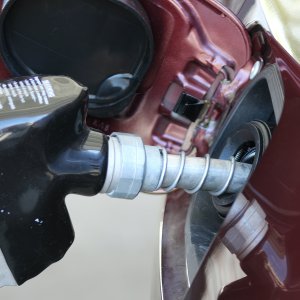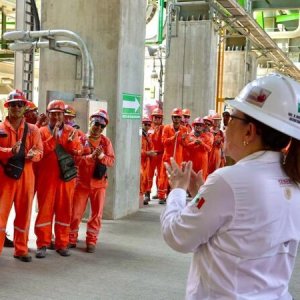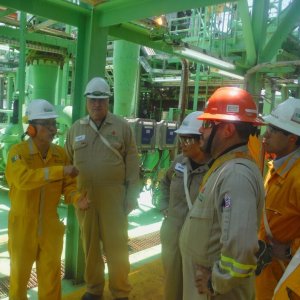
Oil and Gas States Ready to Unlock Potential
According to Mexico’s energy regulator, CRE, the cheapest transportation mode for one barrel of gasoline is through the country’s pipeline network at MX$0.01/km. In close second comes tankers at MX$0.02/km. Rail transportation costs MX$0.06/km and virtual pipelines demand MX$0.14/ km. To shorten distances and decrease hydrocarbons logistics costs, Mexico’s primary oil and gas ports are undergoing a serious revamping program, also known as the Master Program of Port Development (PMDP). Tuxpan, Altamira, Coatzacoalcos, Dos Bocas, Matamoros and Tampico all designed their own PMDP, aligned with the National Infrastructure Program (PNI) of 2014-2018. Critical among the PNI’s objectives is the doubling of the operational capacity of the National Ports System. “MX$80 billion were allocated to modernizing and expanding the country’s ports to improve Mexico’s global transport network,” says Jorge Ruiz, Director General of API Tuxpan.
For Andrés Fusco, Head of the Tamaulipas Energy Commission, an integral strategy encompassing security, economic and educational components, is essential. On April 10, PEMEX CEO Carlos Treviño reported that fuel theft cost the NOC MX$30 billion in 2017. During 1Q18, PEMEX reported fuel theft extraction points amounted to 3,691 nationwide, a 27 percent increase compared to 1Q17. Twenty percent of those points were located in Veracruz, Tamaulipas and Tabasco alone. “From the Energy Commission’s standpoint, we are focused on promoting Tamaulipas’ strengths in the energy industry to foster investments, stimulate the economy and create jobs,” Fusco says. “Governor Francisco García Cabeza de Vaca is working on deploying a strategy in coordination with the federal government, the navy, the army and the state police, he says. “As long as investment continues pouring in and we continue nurturing the industry’s job creation potential, Tamaulipas will live up to the hype.”
TAMAULIPAS UPDATES CENTURY-OLD INDUSTRY
Tamaulipas boasts a 100-year history in the oil and gas industry and one of the largest natural gas reservoirs in the country with both conventional and unconventional resources. It wants to fully capitalize on the 370km of shared border with oil and gas powerhouse Texas to develop Tamaulipas’ oil and gas industry to the highest international standards. “Twenty-three of the blocks auctioned since
Round One are in Tamaulipas, both onshore and offshore. This encouraging result is set to contribute US$45 billion of investments over the next 30-35 years, according to the Ministry of Energy,” Fusco says.
Tamaulipas is working with the Ministry of Energy to foster the development of the state’s oil and gas deposits. Tamaulipas’ constituents, however, want to see tangible results in the short term. The state is working together with industry clusters, local entrepreneurs, the Ministry of Education of Tamaulipas and academia to tackle the industry’s human capital requirements. “We are looking to redesign higher education programs to prepare the state’s professionals to meet the energy industry’s demand for qualified human capital,” says Fusco. Strengthening the links of Tamaulipas’ local value chain is also among the state’s top priorities. “Tamaulipas will ensure the rule of law will benefit both investors and landowners in locations where energy projects are being assessed,” he continues. “We are closely monitoring local content provisions with investors and entrepreneurs.”
According to Eduardo Luque, Director General of API Tampico, connectivity is Mexico’s first and most important asset. “We need to build and expand our existing roads, airports, ports and railways and use them as our basis for growth in the years to come,” he says. “The Ministry of Communications and Transport has committed over MX$1 billion to this end.” As far as infrastructure goes, the state is extending its pipeline network and developing a third port, Matamoros, to address the challenge of its 400km-long coastline. Matamoros is expected to become operational by 2020 and a first terminal tender to provide offshore services is already under way. With this project pipeline, Tamaulipas will become one of only two states along with Veracruz with three strategic ports – one specifically dedicated to the energy industry. The state also designed a Maintain, Attraction and Recover program (MAR) as part of its PMDP. Representatives from Petrobras, Schlumberger and PETRONAS are among those who have visited to evaluate the port’s viability for their ends in Mexico.
VERACRUZ DRAFTING BUSINESS STIMULI
Veracruz was badly hit by PEMEX’s decreased activities as a result of its restructuring into a productive enterprise of the state, although the state holds almost 43 percent of the country’s oil and gas reserves. However, PEMEX had good news for Veracruz in December 2017 when it announced its Ixachi-1 discovery, a major contribution to Veracruz’s reserves. The inclusion of the state in the ZEE program was another positive step. “In the particular case of Veracruz, the ZEE program includes Coatzacoalcos, Nanchital and Ixhuatlan del Sureste,” says Alejandro Zairick, Minister of Economic and Harbor Development (SEDECOP) of Veracruz. The state is polishing the inner workings of incentives similar to ZEEs but at state level, consisting of attractive municipal tax rates, fast-tracked permitting and administrative procedures. “This complete package created a pipeline of 15 letters of intent. Expectations are high and the interested parties include refineries, liquid storage terminals and offshore service providers,” he says. While still undergoing environmental impact studies and feasibility tests, Veracruz is scouting for the right partner to develop its Alvarado port to fill the infrastructure gap in the state. Zairick is confident the project will be finalized before the end of 2018.
TABASCO’S INTERNATIONAL APPEAL
Tabasco was in the industry’s limelight after the results of Round 1.3 were made public, with the discoveries of Macuspana and the entrance of industry heavyweights such as Roma Energy, Grupo Diarqco, Statoil and Murphy Oil. “In the next 25 years about 15 companies, both national and international, will settle in the state as operators for the production and distribution of hydrocarbons,” says José Luis Zúñiga, Head of the Energy Commission at COPARMEX Tabasco.
To deliver on the industry’s expectations, Tabasco’s Dos Bocas port outlined specific infrastructure maintenance, construction and modernization plans in its 2017-2022 PMDP. Infrastructure and equipment maintenance works were allocated MX$248 million throughout the duration of the program. Construction and modernization works will amount to MX$709 million to include the construction of a Port Protection Naval Unit, concrete paving and the first stage of infrastructure development of the Dos Bocas industrial park. By 2022, Dos Bocas will have a cargo handling capacity of 3,175t/h of crude oil and derivative products, a 16 percent increase compared to 2016’s 2,739t/h and double the workforce of 2016. The plan includes a partial cession of rights for the construction and operation of an industrial terminal for hydrocarbons goods, the construction and operation of a stockpile facility and hydrocarbons spill-control equipment.
CAMPECHE CAPITALIZES ON SECURITY API
Campeche developed a successful partnership and coordination for special security operations with the
Ministry of Public Security covering its three ports: Ciudad del Carmen, Seybaplaya and Lerma. “We are the No. 1 state as far as port security goes,” says Alejandro Manzanilla, Director General of API Campeche. The state is strategically positioned in relation to Round Zero’s main oil fields with the closest port to 80 percent of PEMEX’s shallow-water wells. The seeds for future operations related to farmouts and for future shallow-water rounds in Campeche’s shores could be sown in the near future.
Campeche is investing over US$55 million for its Ciudad del Carmen and Seybaplaya ports. Ciudad del Carmen will expand its surface by 12ha, with 1km extra of docks, while Seybaplaya will be extended by another 7ha and 412m of extra docks. The aim is to be capable of receiving bigger vessels. Underground and dredging studies are under way and the state is focusing on developing deeper drafts to better comply with offshore operations. To contribute to both PEMEX’s quest for competitiveness and the interest of private players, Campeche is looking to attract sizable capital through PPP schemes by emitting announcements of intent for its most pressing projects and infrastructure plans.
INTERINSTITUTIONAL COORDINATION
The size of Mexico’s oil and gas industry and its equally sizable implications at both micro and macroeconomic levels are too multipronged to be tackled by a single agency, even at a federal level. Tamaulipas is spearheading an innovative approach by creating its own Energy Commission to oversee the development of the oil and gas and energy industries, a task traditionally under the care of states’ local Economic Development Ministries. “The constant monitoring of oil and gas and energy projects is not being done properly, as showcased by projects in the south of Mexico, delayed due to local social unrest and local governments transferring project development responsibility to the federal government,” says García. “Tamaulipas Energy Commission’s structure and legal framework enable it to oversee all aspects of fostering energy business and is politically sponsored by the federal government, the Ministry of Energy, CNH, CRE and ASEA.”
















